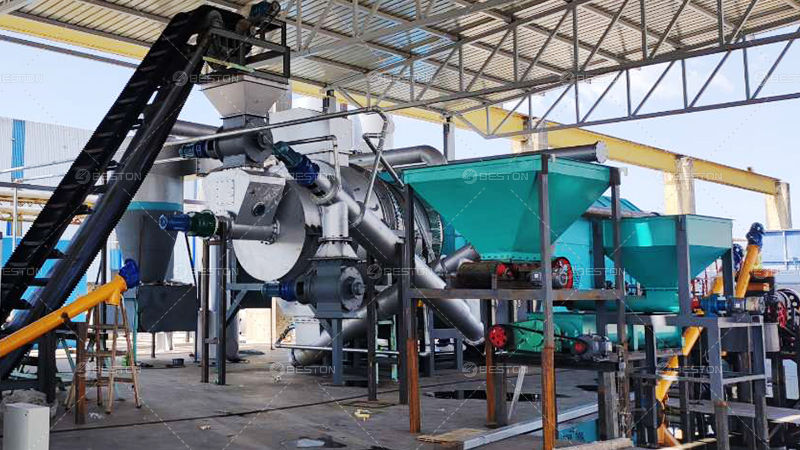Comparative Analysis of Nut Shell Charcoal and Rice Hull Charcoal in Biomass Valorization
- arbourz
- May 13
- 3 min read
Biomass-derived charcoal is gaining traction as a sustainable material with wide-ranging industrial, agricultural, and environmental applications. Among the feedstocks used in modern charcoal machine systems, nut shell and rice hull represent two distinct biomass sources with divergent chemical compositions, combustion characteristics, and post-carbonization functionalities. Understanding their differences is essential for selecting the appropriate material for specific downstream applications.
Feedstock Characteristics and Processing Behavior
Nut shell, including walnut, coconut, and almond shell, is characterized by high lignin and fixed carbon content. This composition yields a denser structure with relatively lower ash content and superior calorific value. In contrast, rice hull contains a significant proportion of silica—often exceeding 15%—which contributes to a brittle, porous structure and substantially higher ash formation during thermal treatment.
In a charcoal making machine utilizing pyrolytic conversion, these fundamental distinctions manifest in varying yield ratios and processing efficiencies. Nut shell typically produces higher charcoal output per unit mass due to its lower moisture and volatile matter levels. Rice hull, however, demands careful control of residence time and temperature to mitigate slag formation and ensure uniform carbonization.

Structural and Chemical Properties
The physical morphology of nut shell charcoal is dense and granular, with a lower surface area compared to the highly porous, low-density structure of rice hull charcoal. This structural divergence has implications in application design. For example, rice hull charcoal is more suited for soil amendment and biofiltration due to its high porosity and cation exchange capacity. Nut shell charcoal, by contrast, offers better performance in metallurgical fuel use or activated carbon production due to its robust structure and higher carbon integrity.
Chemically, nut shell charcoal exhibits higher fixed carbon content—routinely above 75%—making it an efficient energy carrier. Rice hull charcoal often contains residual silica, which can reach levels that impede combustion but are advantageous in certain material applications such as cement additive or refractory filler.
Application Domains and Market Relevance
The selection of feedstock for a carbonization furnace for charcoal is often dictated by intended end-use. Nut shell charcoal is prized in industries requiring high-energy fuels or carbon-based filtration media. Its low ash content also reduces residue handling costs, making it viable for domestic heating and blacksmithing.
Rice hull charcoal, while less energy-dense, finds relevance in agronomic contexts. Its silica content enhances soil aeration and contributes to disease suppression when applied as a soil conditioner. Additionally, the ash derived from rice hull combustion is increasingly valorized as a pozzolanic material in cement blends, further diversifying its value chain.
The economic potential of each charcoal type is also regionally influenced. In rice-dominant agricultural zones, the abundance of rice hull and established logistics make it an accessible, low-cost feedstock. Conversely, regions with extensive nut cultivation—such as coconut-producing territories—tend to favor nut shell due to its superior energy metrics and export potential.
Environmental and Operational Considerations
From an emissions standpoint, nut shell carbonization produces fewer particulates due to its minimal silica and ash. This simplifies flue gas treatment and reduces wear on downstream equipment. Rice hull processing requires robust gas scrubbing infrastructure to manage airborne silica and fly ash.
On the operational side, charcoal machine configurations may need to be adapted to handle specific feedstock characteristics. For example, rice hull may necessitate inclined kiln designs to prevent blockages, while nut shell often benefits from slow-feed rotary systems that allow gradual heat absorption and avoid thermal stress.
Industrial Implications
The choice between nut shell charcoal and rice hull charcoal extends beyond calorific or agronomic value. It implicates design parameters, pollution control measures, and long-term feedstock logistics. Industries looking to integrate biochar into production streams must align raw material choice with functional demands, regulatory frameworks, and total lifecycle performance.
Each biomass variant offers distinct advantages. Optimal deployment hinges on a clear understanding of their thermochemical profiles and market context.









Comments